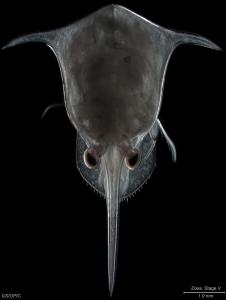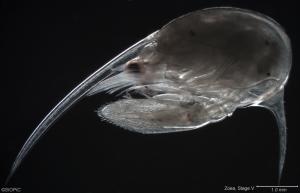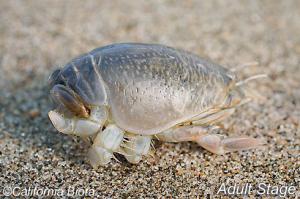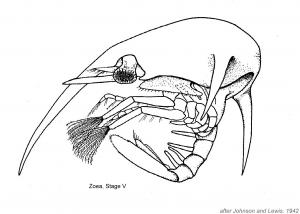Emerita analoga
There are 5 zoea stages; zoea stage I is characterized by a short rostral spine and absence of lateral spines on the carapace. Zoea stages II-V are characterized by a long rostral spine and two long, stout, postero-lateral carapace spines. The telson of zoea stages I-V is broad and flat and armed with about 26 spines. Adults do not have claws or spines but have two pairs of antennae to gather food and oxygen.
Commonly called the sand crab or mole crab. Adults are use in neurological studies because the crab's tail has the largest sensory neurons found in any animal.
http://www.farallones.org/documents/sandcrab.pdf
Johnson, M.W., and Weldon, M.L. (1942) Pelagic larval stages of the sand crabs Emerita analoga (Stimpson), Blepharipoda occidentalis Randall, and Lepidopa myops Stimpson. Biological Bulletin 83: 67-87.





